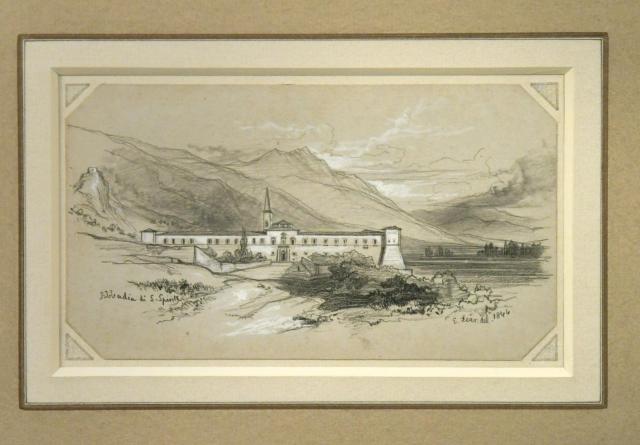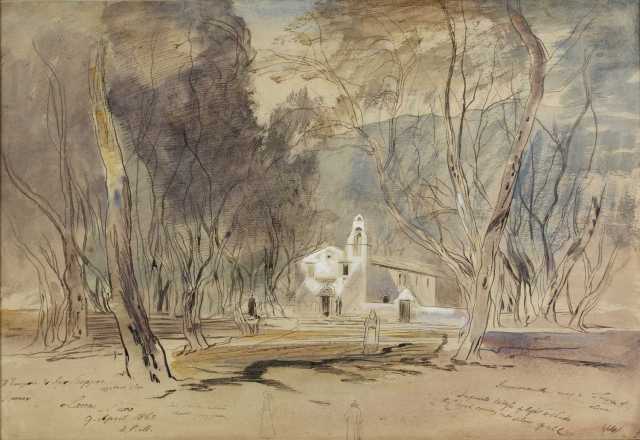The following is the beginning of a letter by Saint-John Perse to Joseph Conrad, from St.-Perse, Letters. Translated and edited by Arthur J. Knodel. Princeton, NJ: Princeton University Press, 1979. Letter 181, pp. 364-365.
To Mr. Joseph Conrad
“Oswalds,” Bishopsbourne,
via Canterbury
England
French Legation in China
Peking, February 26, 1921
Dear friend,
I have received your message through Agnes Tobin.[1] Our friend is still in California, and her health will not permit her to come all the way out here; but from California, thanks to her, I have more than once had news of you in England.1 I am replying to you by way of the same intermediary.
I am very touched by your recalling my first visit to Ashford in Kent, in the company of Agnes, before the war — as I am by all your reminders of the friendly conversations we had in those days. Nor have I forgotten anything that I carried away from visits with you; many a scrap of those first informal chats we had in the evening, in the little downstairs apartment where a terrible attack of gout confined you, recurs to me in the most unexpected way.
I am still with you, poring over the old family album that contains all of your Polish childhood. I still hear you reciting the first stanzas of Edward Lear’s “Jumblies,” and assuring me that you found in them far more of “the spirit of great adventures” than in the best sea-authors, such as Melville. I still hear you becoming irritated at my passion for Dostoievsky and my distaste for Turgenieff. And you surprise me again in confiding to me that the French authors you know best are Molière and Zola. And finally, you still show your annoyance when I repeat that for me you are the only real poet of the sea, whereas you claim that it is only the ship itself that you wanted to exalt — man’s work against the sea like the bow bent against destiny or the fiddle rigged against the night.
I don’t think you ever took my obsession with the sea seriously; it struck you as a literary affectation when, in fact, because of my birth, childhood, and ancient insular atavism on a small Caribbean island, the sea is to me something absolutely basic, mingled with my very blood; and without my noticing, it has spread to every part of my being.
There is nothing metaphysical in all this. When I was still very young, I heard a grown-up peremptorily state that woman was the fifth element. I countered bluntly, saying that it was the sea, which, in my mind, was quite distinct from water and air.
Dear, great, friend, to me you will always be the most humane man of letters I have ever met. Do you know what I admire most about you? Your abiding inability to pass judgment on those whom fate places in your path as friends.
…
[1] Agnes Tobin (1864-1939), an American lady from a well-known Californian family, was a frequent resident in England, where she became an intimate of the literary group that gathered around Alice and Wilfred Meynell. Through Francis famines, she came to know Gide and Larbaud, and then AL [Alexis Léger, st-John Perse real name]. It was through Agnes Tobin that AL came to know Joseph Conrad.

Saint-John Perse, Nobel Prize for Literature 1960.
St.-John Perse also mentioned Edward Lear in a letter to André Gide (Letter 114, pp. 214):
To Monsieur Andre Gide
Paris
Paris, December 7. 1912
Dear friend,
Unfortunately I won’t be in London when you pass through.
I haven’t been able to get hold of the book here that you want to read. But drop me a line telling me whether you are in Paris, and I’ll at least send you, even though it happens to be my own, a copy that I’ll look for here in one of my trunks.
Great as my “critical” admiration for Tagore’s work may be, the thought never crossed my mind of actually “recommending” a book. If I ever did take the liberty of citing what is to my liking or taste, I would recommend no one but Edward Lear, the only poet of a breed that seems to me the poetic breed par excellence.
As for Rabindranath Tagore, whom a very great fame awaits in England, before we go any farther, I’ll bring him around to visit you this summer, or take the liberty of sending him to you — this great, aged pilgrim of such delicate charm and unerring distinction.
…
Finally, there is a letter to Mrs. Henry Tomlinson Curtiss (Letter 345, pp. 642-643):
To Mrs. Henry T. Curtiss[2]
Chapelbrook
Ashfield Road,
Williamsburg, Mass.
Les Vigneaux,
Presqu’ile de Giens (Var)
September 9, 1958
Dear Mina,
…
Other friends in this region: a master ironsmith who forged my grillwork and fence posts and who tells me tales of his youth when he was a “Companion of the Tour de France.” There is also an old master beekeeper, the dean of French apiculturists. I especially like it that he treats his rheumatism by having his own bees sting him. Otherwise this coast is today quite devoid of artisans — coopers and wheelwrights or others of the band who wear leather aprons and used to talk under the jutting roof. (One just cannot find here any point along the coast, as you can on the Atlantic shore of France, where seaman and farmer meet on the same threshold and around the same forge fire to have some chainlink or other mended.) As for literary folk, there are none, thank God! that I know of, but the ghosts are legion: Stevenson, and Conrad, and beloved Edward Lear; Vogüé, Edith Wharton; Lamartine and Michelet — even Tolstoy, would you believe it? and finally Valery,[3] whom I wish I could still tease by reminding him that Mediterranean light blinds us and shuts the door on our metaphysical threshold.
…
[2] Mrs. Henry Tomlinson Curtiss, nee Mina Kirstein, sister of Lincoln Kirstein, the editor of Hound and Horn (i 927-1934), a noncommercial literary review somewhat analagous to Commerce in Europe, and subsequently one of the founders of the New York City Ballet. Mrs. Curtiss was not only a great admirer of Marcel Proust’s works; she had actually translated a copious selection of Proust’s letters into English (Letters of Marcel Proust, 1948).
[3] The nearby town of Hyères was a wintering spot frequented by Queen Victoria and by any number of English writers including Robert Louis Stevenson, Joseph Conrad, and Edward Lear, as well as such Anglophile American writers as Edith Wharton and her friend Henry James.










